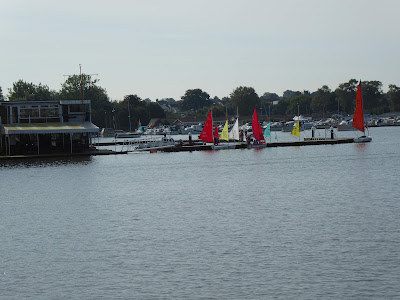Southwold is a small sea side town in Suffolk, East Anglia. It was a town that I had wanted to visit for some time so for a few very sunny days last month I got my wish.
There is a small harbour at the mouth of the River Blyth just 10/15 minute walk from the town. Small fishing boats and pleasure boats were moored along the river. It also had a smokehouse and a place to buy fish as well as a restaurant.
I walked to the end of the harbour and then turned inland to walk across the marshes to the town. The marshes have been managed for centuries as grazing marshes, using an elaborate system of dykes which drain out to the river at low tide.
One of the main features of the town is the mid 15th century church of St Edmund. It was built in 1430 and took 60 years to complete.
This is a 20th century statue of St Edmund in the niche above the door.
The church has a number of original features as well as numerous additions and renovations. The thick wooden doors welcoming you into the church are original.
This baptismal font is one of the tallest in the country. Parts of it were hacked off by Cromwell's reformers. It was renovated in 1935. Behind the font on the wall you can see Southwold Jack.
This 15th century figure depicts a soldier of the House of York and dates from the Wars of the Roses (the period in which the church was built). He was designed to strike a bell on the hours and quarters.
The wooden roof is remarkable and full of colour as it would have been in medieval times. It was restored in 1867.
There is a carved angel on the hammerbeams.
This rood screen dates back to 1480 and stretches across the width of the building. Angels, prophets and apostles were painted on the screen but many of the faces were scratched off by Cromwell supporters in the mid 17th century.
In the choir stalls are these wonderful carved figures dating from the late 15th century.
Richly decorated pulpit but I couldn't ascertain its age.

This is a more modern sculpture around the organ console. The organ dates from 1887 but the console from 1966.
This walnut chest with its decoration of a knight hunting a wild boar is at least 50 years older than the church.
There were numerous memorials in and around the church.
I left the church and wandered back through the town.
Another important building in the town is Adnams brewery. There has been a brewery here for over a hundred years.
On the wall was an effigy of Southwold Jack
Unusual to see a lighthouse in the middle of the town but it is built on the top of the hill I suppose.



























































